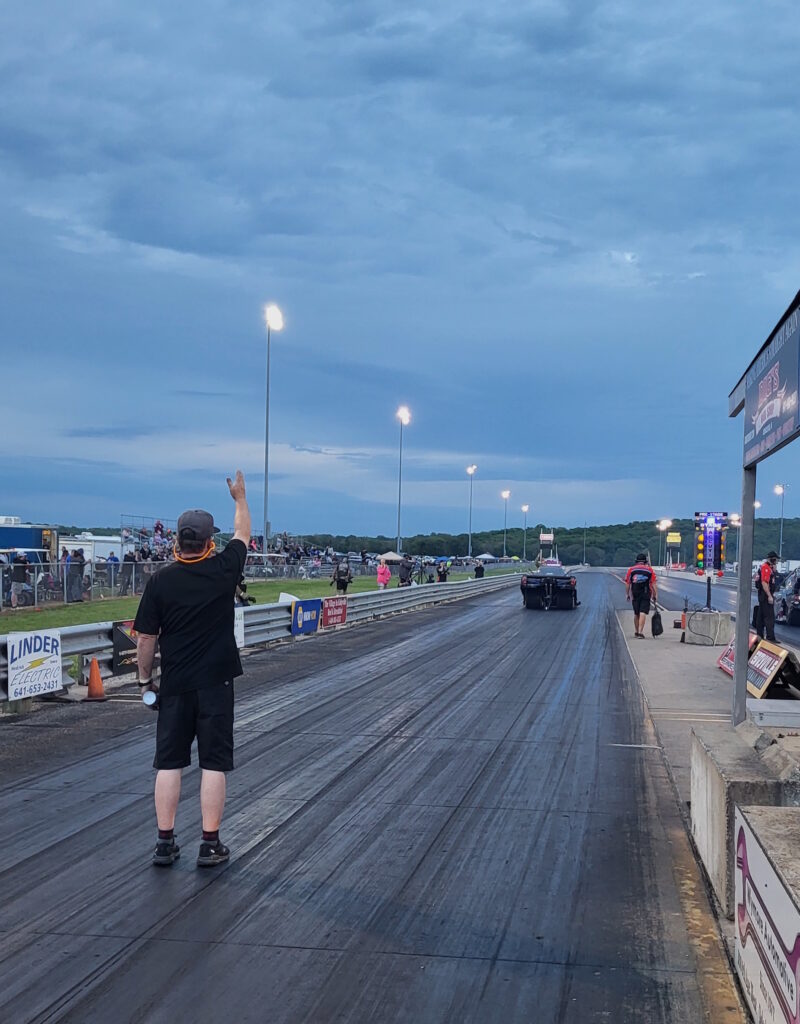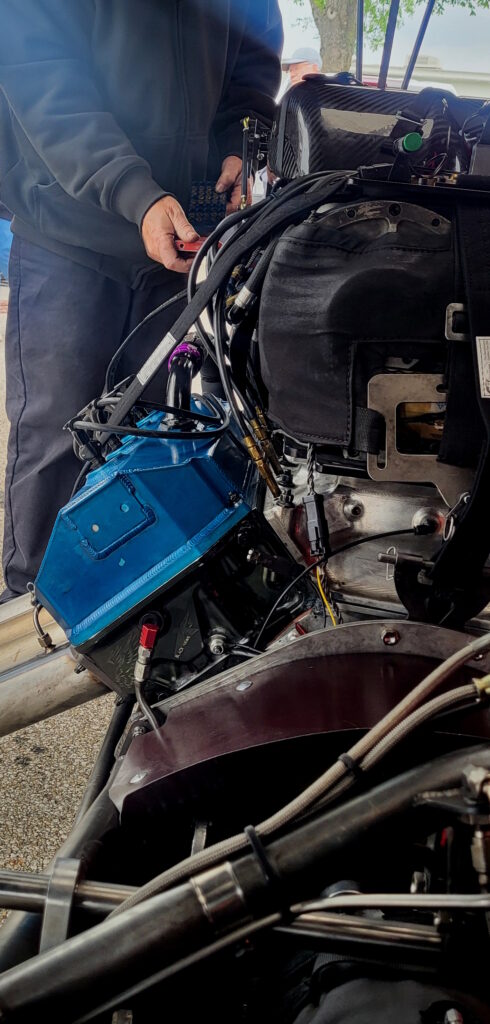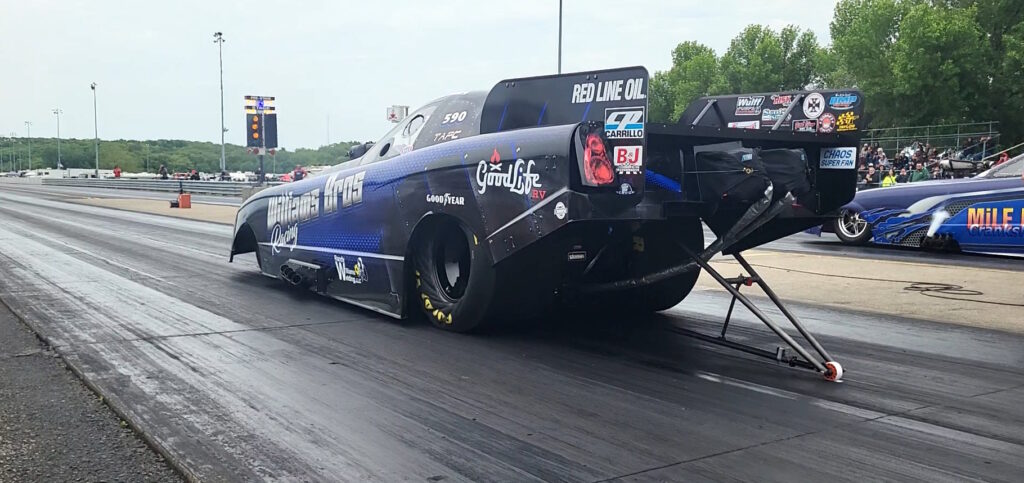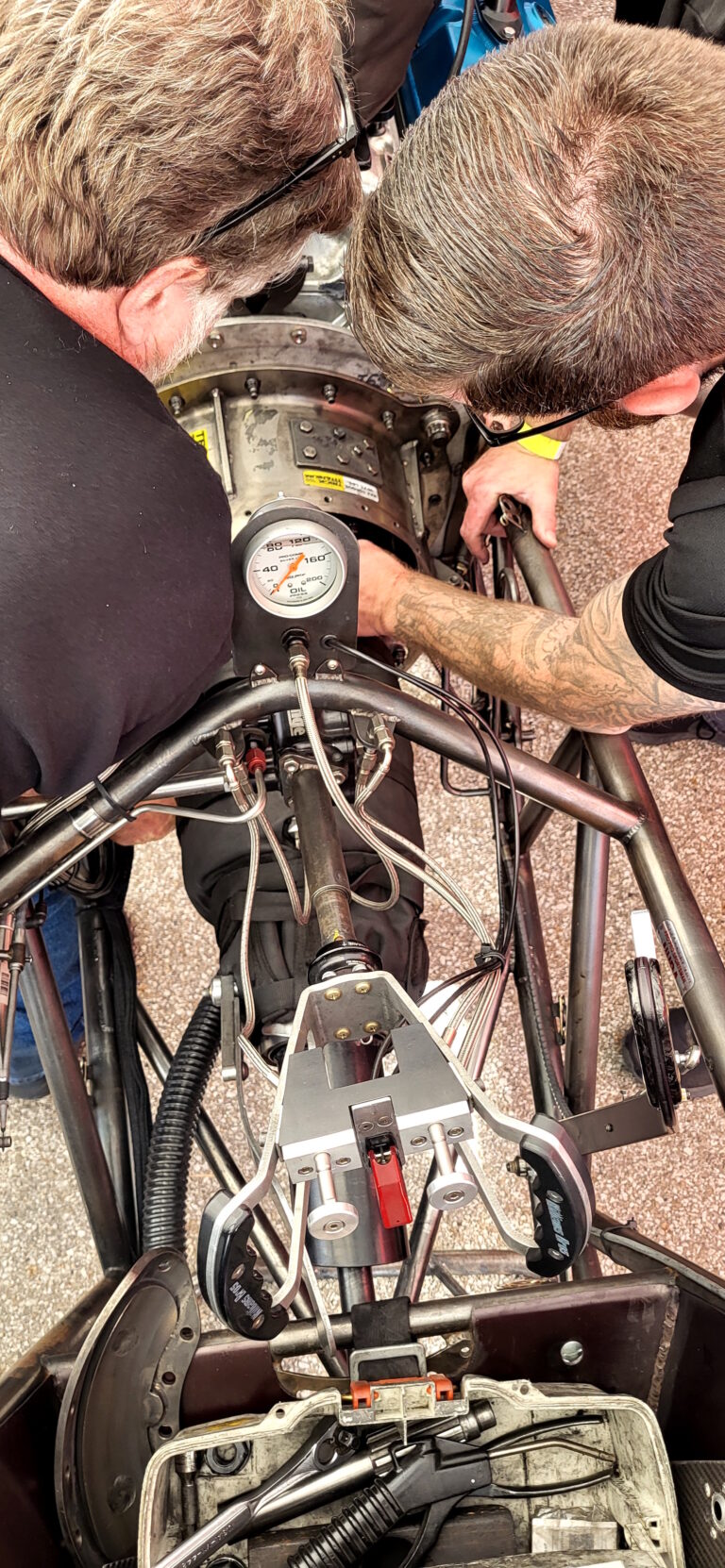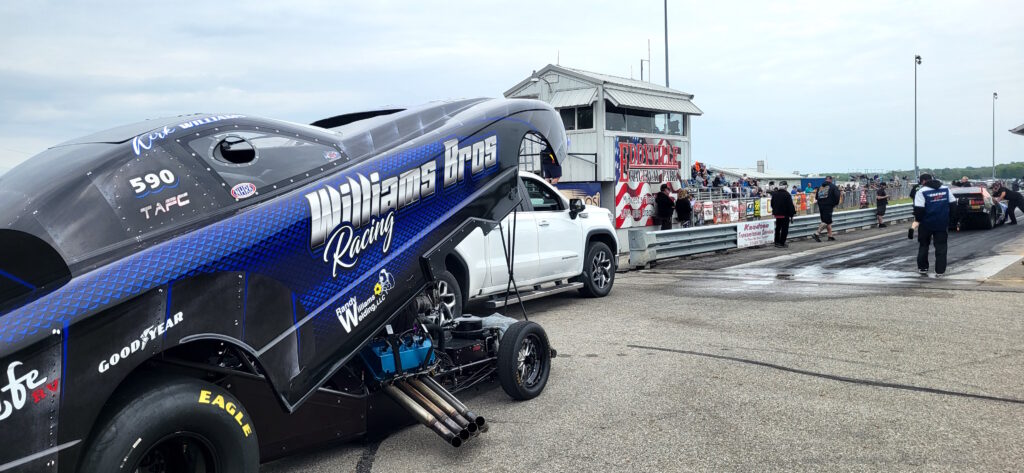Eddyville, Iowa—third race of the season. After an eye-opening performance in Tulsa, we knew there was work to be done. Something in the tune-up wasn’t working with this new combination. Heading into Eddyville, we had a plan to change the starting line procedure to resemble the old car.
With so many variables, getting back to a solid baseline was essential for consistency. We needed to figure out if the car was close on a baseline setup before introducing the new starting line procedure into the mix. So—no more going full throttle on the starting line before the green. The additional boost created by the supercharger was a variable we needed to manage. We suspected it might be upsetting the combination.
With the throttle variable removed, we could better compare this car’s behavior to the old one—it should react the same, since they’re nearly identical… right? With that variable out of the picture, we could begin to see whether any other changes were needed.
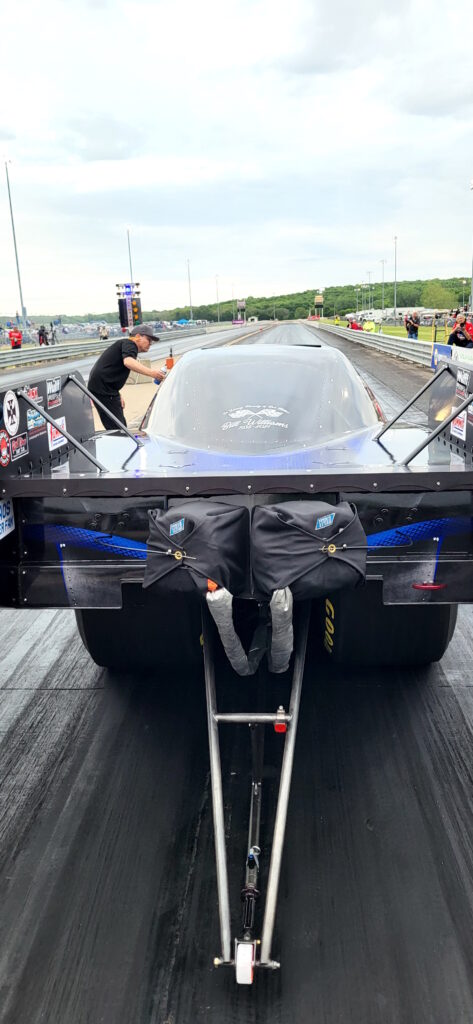
Armed with our new plan we took the track for Q1 on Friday night. The track was cool, and the car made a good hit. Running roughly a 3.74 but hitting the timing cones at the end of the track, so this run would not count. This was a promising run for the car, as it was able to leave the starting line and looked very stable. For Q2 we planned to see if the car would repeat. We made a wicker bill change to help with drivability down track to keep off those cones. On this run the car left again and ran a 3.77 at 203 mph. For Q3 we made a couple of changes to the timing and clutch to pick up again. The car responded and picked up to run a 3.74 at 203mph. This would put us in the number two position. We would face off against bill Bernard in the first round of eliminations.
In the first round against Bill Bernard, Kirk was off the line with a slight advantage, but Bill closed that gap fast with a stellar 60 ft time! It was a tight race with Bill ahead. Then something happened to Bills car and it fell off pace slowing. Kirk would take the stripe running a 3.80 at 201mph with a margin of victory of 0.021 seconds.
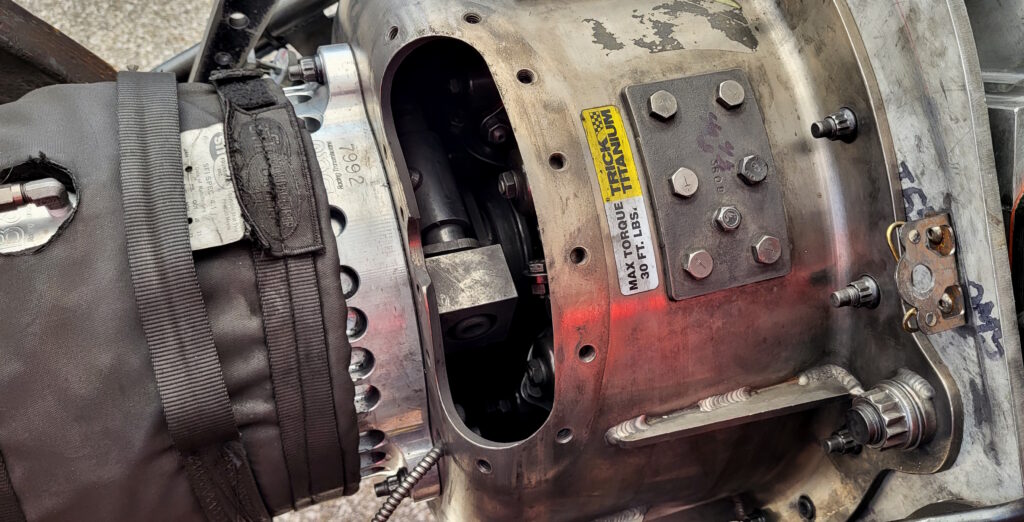
Moving to the second round we would face off against Shayne Lawson. Lawson would take the win in this round due to a red light on the starting line. Yes, Kirk had a red light, but this was not all that bad. Another issue we have been battling is the cars reaction time. It has been slow, since we left testing that very first time out. We have been making changes to the car with weight, timing, and clutch trying to figure out how to get it to react sooner. We also had to ask what we did change after testing that could affect this area?
We did change setup on the tires, so for first round we set them up like we did in testing and how they were the last three years of racing. This cut the reaction time in half of what it had been. This was interesting, so we decided to see if this result would repeat. It did, Kirk went red, not bad it was -0.013. This would leave us to believe that we have potentially solved this problem.
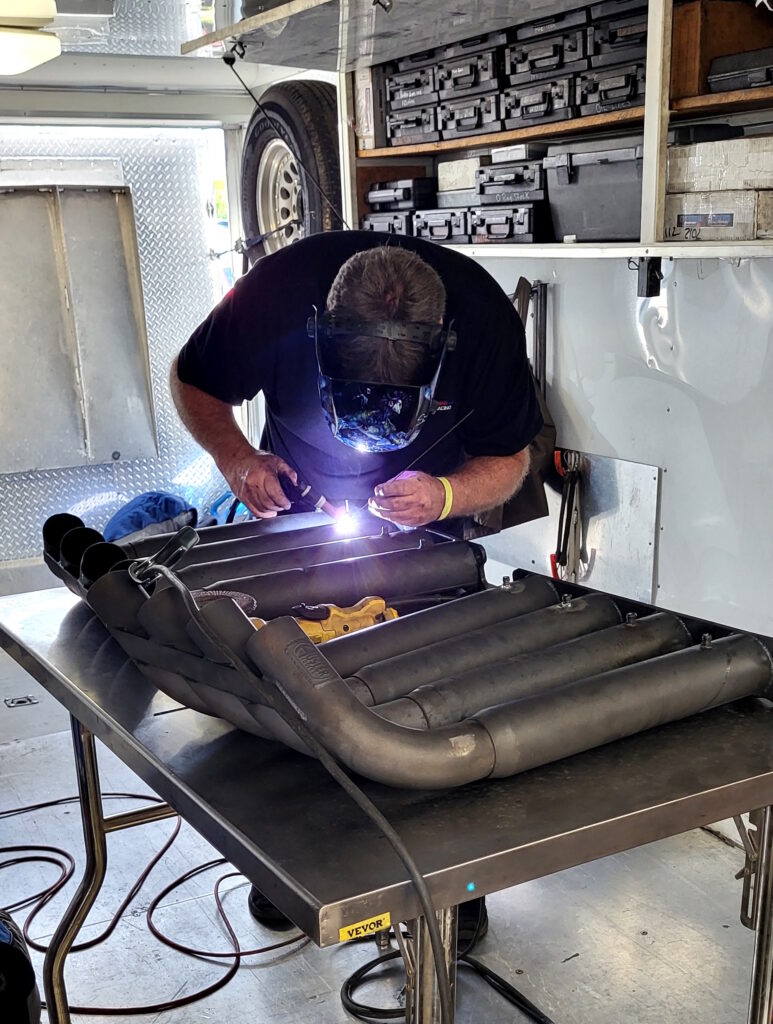
One thing Kirk has consistently proven over the years is his ability to leave first. It comes from his adaptability and precise feedback on how the car reacts. That feedback has been crucial in improving the car to the point where he cut a close red light. Now, he can get to business, settle into a rhythm, and start doing what he does best—leaving FIRST!
